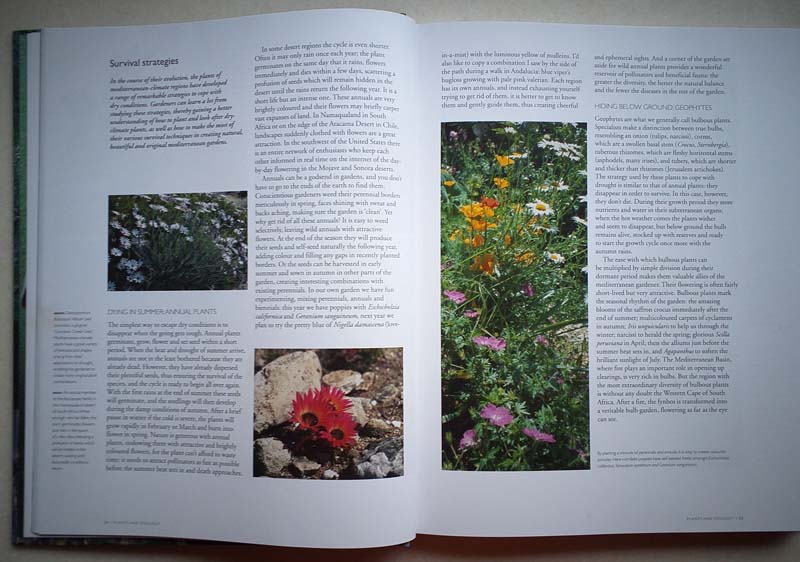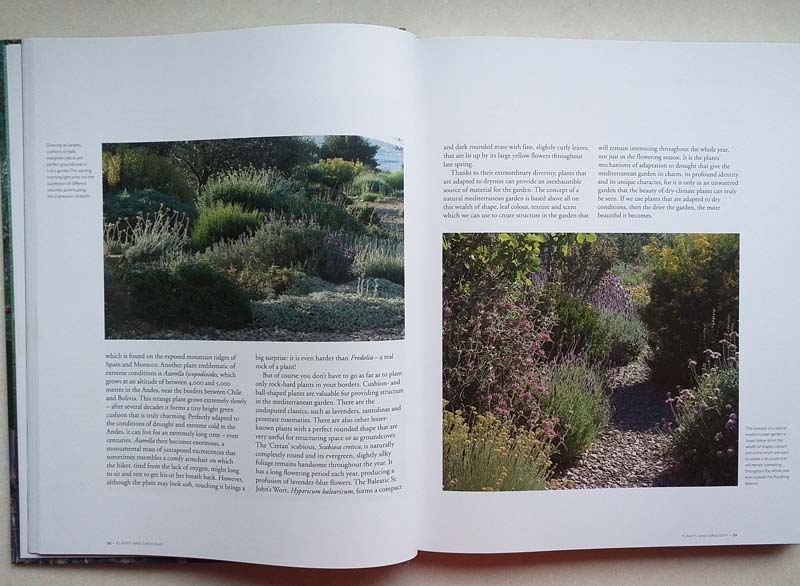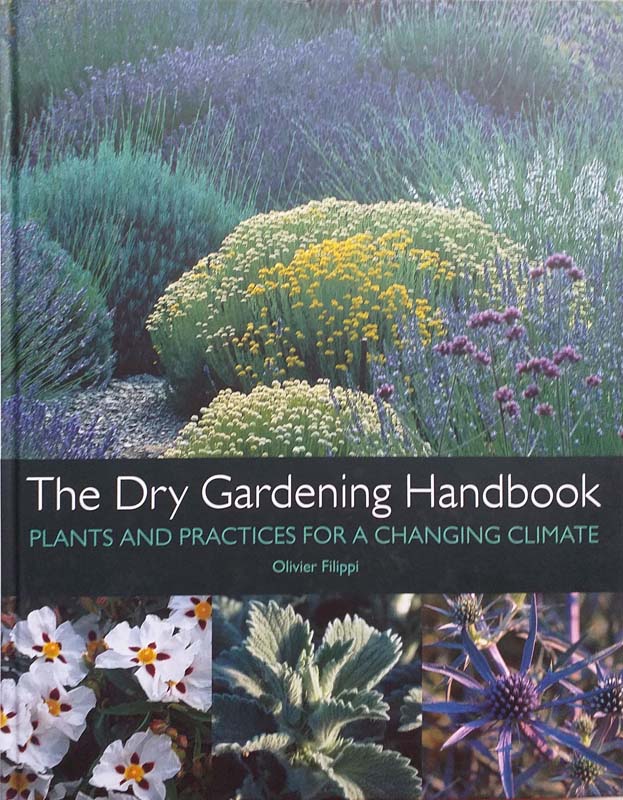A Radical Shift in Perspective
Instead of engaging in a constant battle to adapt our gardens to suit plants would it not be better to search for plants that suit our gardens?
This would require a radical shift in perspective which has much to recommend it and Olivier Filippi’s book, The Dry Gardening Handbook, will certainly convince you of the good sense of such an approach and of the beautiful results which will come of it.
Climate change is an established scientific fact and those who garden are all too familiar with the ever greater swings in weather conditions and the regularity with which we experience more extensive dry periods in summer leading to the necessity of regular watering or the loss of plants. Olivier Filippi suggests a proactive rather than a reactive approach; instead of constantly battling the conditions we now find in our gardens with irrigation, mulching etc we should search out plant species and cultivars which are suited to these conditions, something which rings very much of the old Beth Chatto dictum, “Right plant, right place.” It’s an approach of working with rather than against drought. We cannot change these climatic conditions which are giving us drier summers but we can change the range of plants we grow and still continue to have beautiful gardens.
Olivier Filippi has spent thirty years studying the plants of the various areas around the world which have a mediterranean climate – Chile, California, South Africa, South-western Australia and, of course, the Mediterranean basin itself – and has used this experience to creating a dry garden. With an understanding of how a range of plants not only survive but thrive in drought conditions he can recommend gardening techniques – selection, planting, initial watering and ongoing maintenance – to ensure success for us in our own gardens.

Gardeners have long grown drought-loving plants on rock gardens and on raised beds where excellent drainage is guaranteed so the idea of introducing mediterranean plants to our gardens is not as far-fetched as might at first be thought. Indeed, we already grow quite a range of such plants – rosemary, lavender and the likes – and the climate changes we are experiencing might well be regarded as an opportunity to grow a wider range of plants in our gardens than we have to date. After all, while the temperate regions of Europe host approximately 6,000 native plant species, the Mediterranean region has a range of some 25,000.

The A – Z of Plants for the Dry Garden gives an extensive list for the gardener to consider. Many will be familiar and others less so but each is described in detail both their origins and use in the garden with information on their hardiness against frost and resistance to drought. This is the largest section of the garden and will prove an excellent resource to gardeners.

This is an excellent book, first published in 2007 and now reissued in an updated format. A friend, a garden designer, maker and maintainer in California, tells me that it is the grubbiest, most dog-eared book in his possession because he uses it so much and wouldn’t be without it. For me, it was a very pleasant, informative and interesting read which has relevance to my own garden where the summer dry periods are exacerbated by the drying effects of trees. Perhaps the whole garden will not immediately be changed to this dry gardening style but there are areas where it will certainly be applicable.
[The Dry Gardening Handbook – Plants and Practices for a Changing Climate, Olivier Filippi, Filbert Press, 2019, Hardback, 208 pages, £40, ISBN: 978-1-999-73455-8]



